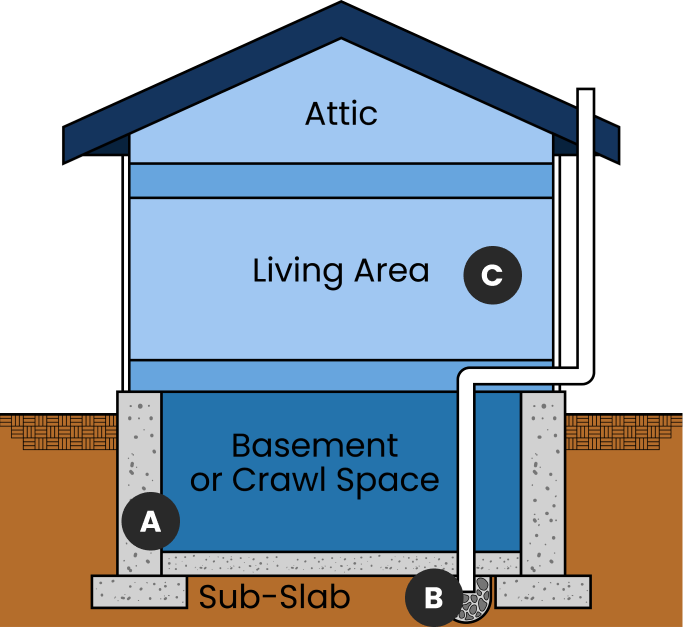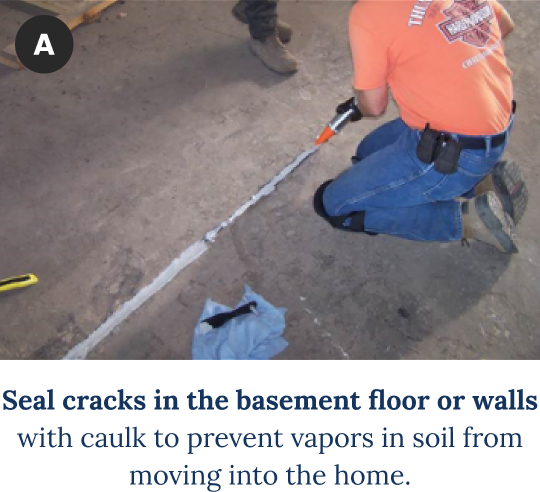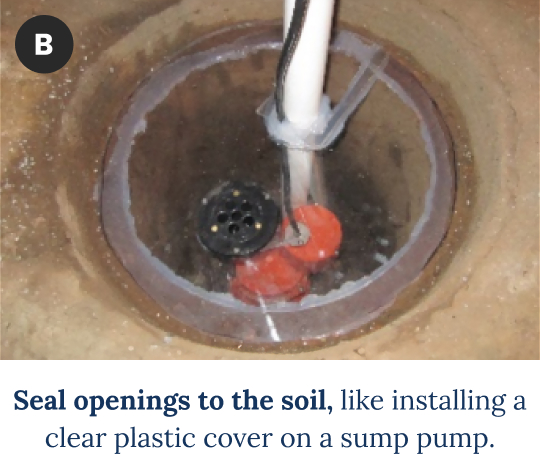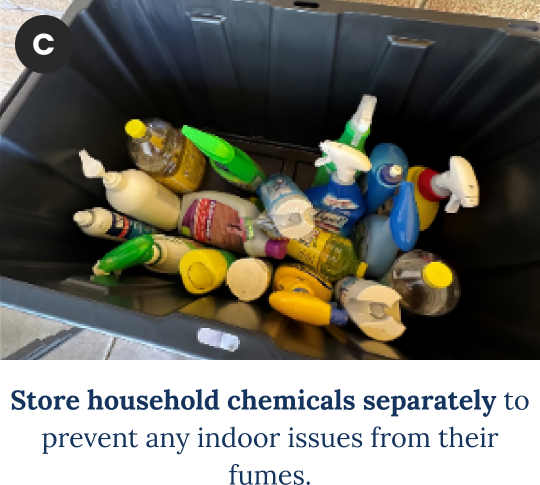Vapor Intrusion Mitigation Actions
Vapor Intrusion Mitigation Actions
Helpful response actions may include sealing any cracks where vapors can migrate from the ground into the structure. By sealing these pathways, the vapors underneath the building are no longer able to enter the structure. Sealing cracks, using caulk in the basement floor or walls and around plumbing or electrical piping, can prevent vapors from moving into the building. Additionally, many homes have a sump and sump pump to keep the basement or crawl space dry. The top of the sump can be sealed to prevent vapors from flowing in through this opening.
Although not coming from beneath the structure, various consumer products contain chemicals that can negatively impact indoor air quality. Proper storage of household chemicals, either in a designated area separate from the living space or in a sealed plastic tote, can limit any potential negative impacts in indoor air.
Helpful Response Actions:
- Seal cracks in the floor or walls in the basement or floor slab.
- Seal cracks or openings around plumbing or electrical piping in the lowest level (basement or first floor).
- Seal the top of the sump to prevent vapors from flowing in through this opening in the foundation.
- Seal floor drains by installing a type of drain seal that allows water to drain, but no air can travel through.
- Store household chemicals in a separate area or in a container to prevent any indoor air issues from consumer products.




